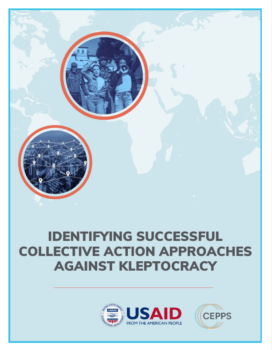The rise of kleptocracy is a threat to democracy and a contributing factor to the ongoing democratic recession that negatively affects the lives and livelihoods of millions of people around the world. In kleptocracies, the government is controlled by officials who use political power to appropriate the wealth of their nation. These powerful actors weaponize corruption and globalization to amass authority and wealth. Kleptocrats are also known to use a broad set of tactics to maintain the political and economic influence necessary to cement control and suppress dissent by relying on local and global networks of enablers.
But the government institutions, civil society organizations, and businesses focused on combating corruption are often constrained by a lack of jurisdictional and delegated authority, expertise, and resources to cooperate effectively, which weakens their efforts to fight back. In fact, those individuals who are best positioned to prevent and mitigate kleptocracy have a collective action problem. This is a significant contrast to the sophisticated webs that kleptocrats rely upon. These people who are willing to fight this criminal behavior often have competing agendas, and a wide variety of interests that make collaborating difficult. Thus, their anti-kleptocracy efforts are hampered and appear to be isolated, uncoordinated, and uninformed by international practice.
Yet, throughout the world, there are examples where non-violent collective action from citizens, civil society, and others who strategically collaborated thwarted kleptocratic governance, or they, at least, created a window of opportunity for meaningful anti-corruption and pro-democracy reform.
To address these issues CEPPS/IRI and CEPPS/CIPE:
DEPP LEARNING AGENDA ALIGNMENT
Insights from this technical leadership project:
CORE QUESTIONS
DELIVERABLE
 Final Report: Identifying Successful Collective Action Approaches Against Kleptocracy
Final Report: Identifying Successful Collective Action Approaches Against Kleptocracy
Executive Summary: Identifying Successful Action Approaches Against Kleptocracy
Video Series: Identifying Successful Collective Action Approaches Against Kleptocracy